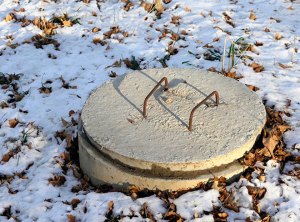If you’re wondering whether it’s possible to empty a septic tank during the winter months, we’ve got the answers you’re looking for. In this article, we will provide you with valuable winterization tips that will ensure successful septic tank pumping, even in the coldest of temperatures. Discover the dos and don’ts of winter septic tank maintenance, and learn how to avoid potential issues that can arise during the colder season. With the right precautions and knowledge, keeping your septic system functioning smoothly all winter long is easier than you might think. So, let’s get started on a winterization journey that will guarantee a trouble-free septic tank pumping experience.
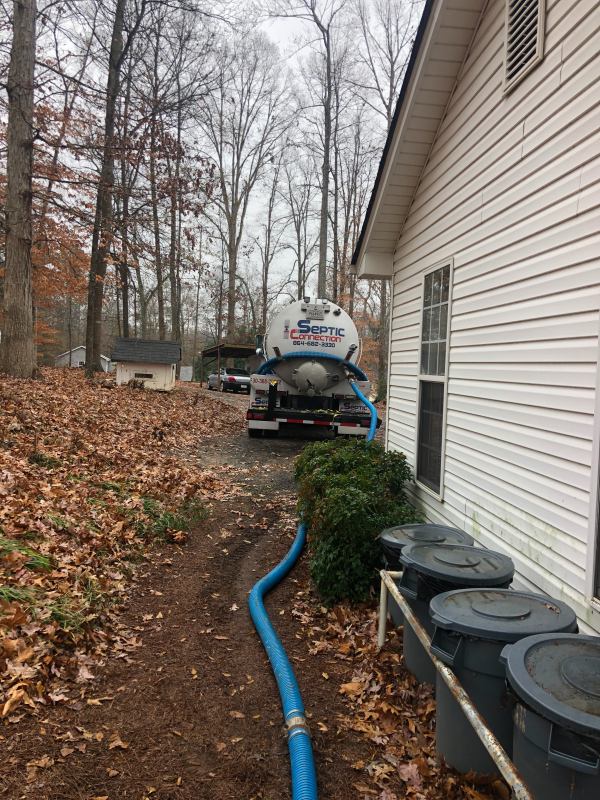
Can You Empty a Septic Tank in the Winter?
If you own a septic tank, you probably understand the importance of regular maintenance and pumping to keep it functioning properly. However, when the winter season arrives, you may wonder if it is possible to empty a septic tank in cold temperatures. The answer is yes, you can pump a septic tank in the winter, but there are a few important steps and considerations to keep in mind for successful winter tank pumping.
Importance of Regular Septic Tank Pumping
Before delving into the specifics of winter tank pumping, let’s first discuss why regular septic tank pumping is crucial. A septic tank is designed to collect and treat wastewater from your household. Over time, solid waste and sludge accumulate at the bottom of the tank, while the liquid effluent flows out to the drainfield for further treatment. If the tank is not pumped regularly, the solids can build up and cause blockages, leading to backups, foul odors, and even system failures.
Pumping your septic tank at least once every three to five years, depending on its size and usage, helps to prevent these issues and maintain the overall health of your septic system. Regular pumping ensures that the tank does not become overloaded with solid waste, allowing it to function effectively and efficiently for many years to come.
Can You Pump a Septic Tank in the Winter?
Now, let’s address the main question at hand: Can you pump a septic tank in the winter? The simple answer is yes, but there are some preparations and precautions to consider in order to successfully empty your septic tank during the colder months.
Preparation for Winter Tank Pumping
Check the Tank Condition
Before attempting to pump your septic tank in the winter, it is essential to check the condition of the tank. Inspect the tank for any signs of damage or cracks that may have occurred during the summer or fall. Cracks in the tank can lead to leaks and potential damage during the pumping process. If you notice any issues, it is advisable to consult a professional septic service for repairs before proceeding with winter tank pumping.
Prepare the Access Points
Next, ensure that the access points to the septic tank are clear and easily accessible. This includes locating and clearing any snow, ice, or debris that may be obstructing the access ports or covers. Clearing the access points beforehand will save you time and effort during the pumping process, ensuring a smoother and more efficient experience.
Gather Necessary Tools and Equipment
Before embarking on your winter tank pumping journey, gather all the necessary tools and equipment. This typically includes a septic tank pump, hoses, a portable generator if needed, and any additional tools recommended by your septic service provider. Having these items ready ahead of time will streamline the pumping process and limit any potential delays or setbacks.
Protecting Yourself and the Environment
When it comes to winter tank pumping, your safety and the protection of the environment are of utmost importance. Here are a couple of key considerations to keep in mind:
Wear Appropriate Personal Protective Equipment
When working with septic systems, especially during pumping, it is crucial to wear appropriate personal protective equipment (PPE). This includes gloves, protective eyewear, and sturdy footwear. These precautions will reduce the risk of exposure to harmful bacteria and contaminants that may be present in the septic tank.
Follow Environmental Guidelines
It is also important to adhere to environmental guidelines when emptying your septic tank in the winter. This includes disposing of the effluent properly and ensuring it does not contaminate nearby water sources or the surrounding environment. Always consult local regulations and guidelines to ensure compliance and prevent any negative impact on the environment.
Choosing the Right Time
Timing is essential when it comes to winter septic tank pumping. Consider the following factors to choose the right time for emptying your tank:
Avoid Freezing Temperatures
One of the primary considerations for winter tank pumping is avoiding freezing temperatures. Scheduling your pumping service during a milder period, when temperatures are above freezing, is ideal. Freezing temperatures can cause complications such as frozen pipes or components, making the pumping process more difficult, time-consuming, and potentially damaging. Plan ahead and keep an eye on the weather forecast to select a suitable time for your septic tank pumping.
Consider Ground Conditions
In addition to temperature, consider the ground conditions when planning your winter tank pumping. If the ground is frozen or covered in snow, it may be challenging to access the septic tank or maneuver heavy equipment. The ideal scenario is to wait for the ground to thaw or clear the area of snow before scheduling the pumping service. This will make the process safer and more efficient for both you and the septic professionals.
Plan the Pump-Out Beforehand
To ensure a successful winter tank pumping, it is advisable to plan the pump-out beforehand. Contact a reputable septic service provider in advance to schedule the service and discuss any specific requirements or considerations for winter pumping. Planning ahead allows you to secure a convenient time slot and address any potential issues or concerns with the professionals before they arrive on-site.
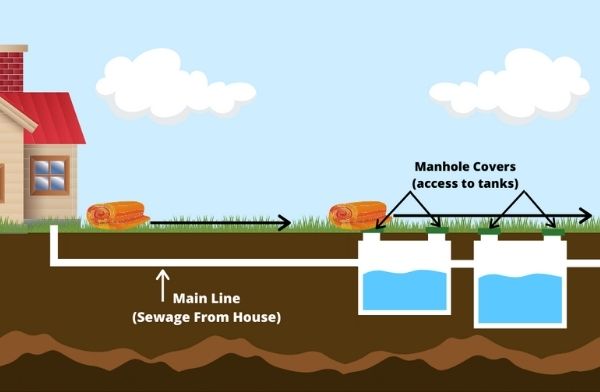
Special Considerations for Winter Pumping
When it comes to pumping a septic tank in winter, there are a few additional considerations to keep in mind to ensure a smooth process and maintain the functionality of your septic system:
Account for Reduced Bacterial Activity
During the winter months, bacterial activity in the septic tank naturally slows down due to the colder temperatures. This reduced activity can affect the decomposition of solid waste within the tank, potentially leading to increased accumulation and blockages. To counteract this, you may want to consider adding a septic treatment product specifically designed to enhance bacterial activity during winter months. Consult a septic professional for recommendations on suitable products and proper usage.
Prevent and Thaw Frozen Pipes and Components
If you live in a region with severe winter temperatures, it is crucial to take steps to prevent and thaw any frozen pipes or components associated with your septic system. Frozen pipes can hinder the pumping process and may even cause damage to the system. Insulate vulnerable pipes with heat tape or utilize safe thawing methods before attempting to pump the septic tank. If you are unsure how to handle frozen pipes or components, it is best to consult a professional to avoid further complications.
Insulate the Tank and Pipes
Insulating the septic tank and pipes is another effective way to protect your system during winter. Insulation helps to maintain a stable temperature within the tank, preventing freezing and potential damage. Use appropriate insulation materials recommended by your septic professional to effectively protect your tank and pipes from the harsh winter conditions.
Working with Professionals
While some homeowners may attempt to empty their septic tanks themselves, it is generally recommended to hire experienced septic professionals, especially during winter pumping. Professionals have the necessary expertise, equipment, and knowledge to handle the process safely and efficiently. Here are a few considerations when working with professionals:
Hire Experienced Septic Professionals
When selecting a septic service provider for your winter tank pumping, opt for one with a proven track record and extensive experience in the field. Experienced professionals will have the necessary knowledge and skills to handle winter pumping, ensuring a successful and hassle-free process. Ask for recommendations from friends, family, or neighbors, or conduct thorough research to identify reputable septic service companies in your area.
Ensure Appropriate Permits and Licenses
Before any septic work is conducted, it is crucial to ensure that the professionals you hire have the appropriate permits and licenses. Different regions may have specific requirements for septic tank pumping, and working with licensed professionals ensures compliance with these regulations. Request proof of permits and licenses from the septic service provider to ensure they are qualified to perform the necessary work.
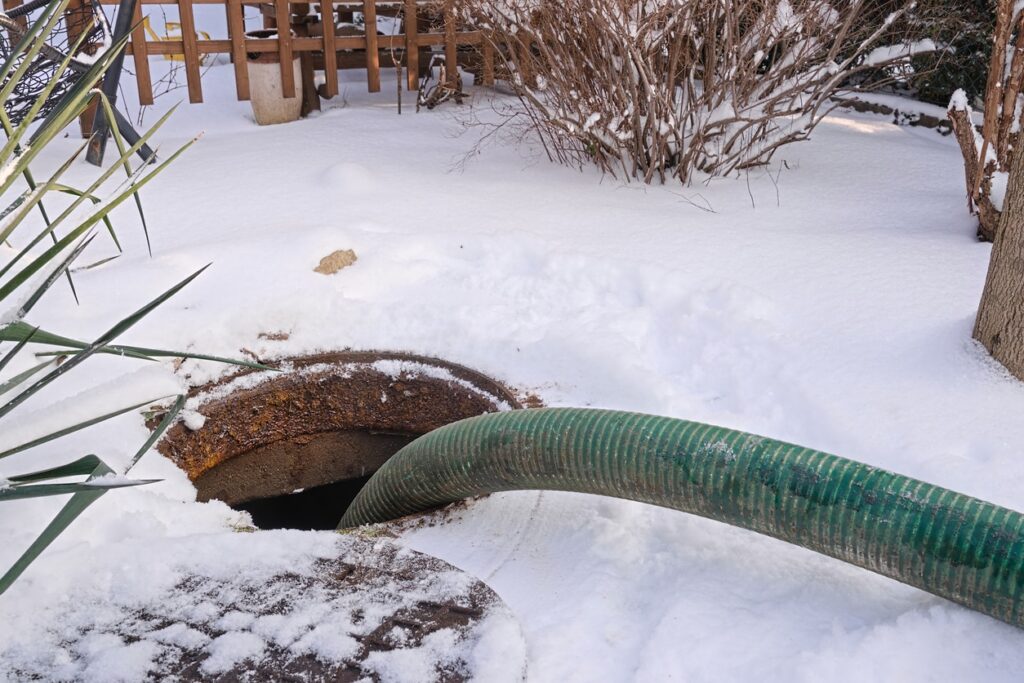
Maintenance After Pumping
Once your septic tank has been pumped during the winter, it is essential to conduct a few post-pumping maintenance tasks to prolong the lifespan of your septic system and prevent future issues. Here’s what you should do:
Conduct a Thorough Inspection
After the tank pumping, conduct a thorough inspection of the entire septic system. Check for any signs of damage, leaks, or malfunctioning components. If any issues are observed, it is crucial to address them promptly to prevent further damage and ensure the system’s ongoing functionality.
Implement Preventive Maintenance
To keep your septic system in optimal condition throughout the winter and beyond, implement preventive maintenance measures. This includes regularly inspecting and cleaning the effluent filter, practicing water conservation to avoid overwhelming the system, and scheduling routine inspections by a professional septic service provider.
Monitor the Tank During Winter
During the winter months, it is important to keep an eye on your septic tank for any potential issues. Observe the drainfield area for signs of standing water, foul odors, or any unusual changes. Additionally, monitor the indoor plumbing for slow drains or gurgling noises, as these can indicate a full or compromised septic tank. If you notice any problems, contact a septic professional to assess and address the issue promptly.
Troubleshooting Common Issues
Despite taking necessary precautions, certain issues may still arise with your septic system during winter tank pumping. Here are a few common problems and tips for troubleshooting them:
Dealing with Refreezing Problems
If you encounter refreezing problems after pumping your septic tank, it is important to mitigate them promptly. Insulate any exposed pipes, repair leaks or cracks that may be causing the issue, and consider utilizing heat tape for extra protection. If the refreezing persists, consult a professional septic service provider to assess and resolve the problem.
Addressing Sluggish Drainage
Sluggish drainage is a common problem that may occur after pumping a septic tank, especially during winter. If you notice slow drains or water backing up in sinks, showers, or toilets, it may indicate a partially clogged or overloaded drainfield. Reduce water usage, avoid flushing non-biodegradable items, and contact a septic professional to inspect and address the issue.
Handling Tank Overflow
In rare cases, tank overflow may occur during winter tank pumping. This typically happens when the tank becomes too full, and the effluent has nowhere else to go. If you experience tank overflow, it is crucial to contact a professional septic service immediately. They will assess the situation and implement the necessary steps to prevent further damage and restore the functionality of your septic system.
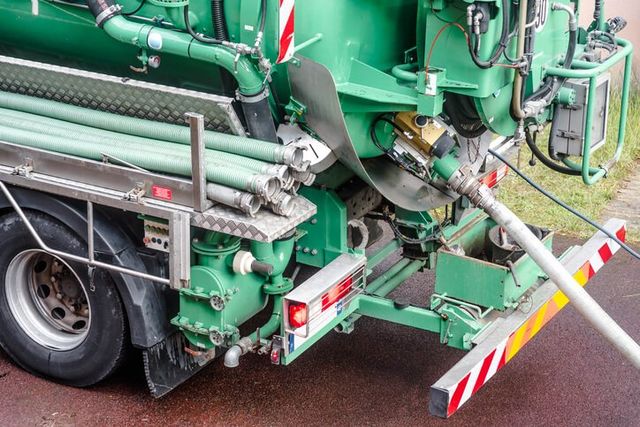
Signs of a Full Septic Tank
Knowing the signs of a full septic tank is crucial for every homeowner. By recognizing these signs, you can schedule pumping services in a timely manner and prevent potential issues. Here are a few key indicators of a full septic tank to watch out for:
Slow Drains and Gurgling Noises
If you notice that your drains are slow or making gurgling noises, it may indicate that your septic tank is nearing capacity. This occurs when the solids in the tank start to clog the pipes, hindering the flow of wastewater. If you experience these symptoms, it is recommended to contact a septic service provider to assess the situation and schedule a pumping if necessary.
Foul Odors
Foul odors around your septic tank or in your home can be a clear sign of a full septic tank. When the tank is overloaded with solid waste, it can emit unpleasant odors that permeate the surrounding areas. If you detect persistent odors, it is crucial to get your septic tank pumped as soon as possible to prevent further issues and maintain a healthy living environment.
Spongy or Wet Ground Around the Tank
If the ground around your septic tank feels spongy or constantly remains wet, it may indicate that your septic tank is full or experiencing issues. An overfilled tank can cause the liquid effluent to leak out and saturate the soil, leading to these ground conditions. If you notice these signs, it is advisable to contact a septic professional to assess the situation and determine the best course of action.
Benefits of Winter Tank Pumping
Pumping your septic tank during winter offers several benefits that can help you avoid emergencies, extend the lifespan of your septic system, and ensure proper functioning in cold weather. Here are some key advantages of winter tank pumping:
Avoid Emergencies and Costly Repairs
Regularly pumping your septic tank during the winter helps to prevent emergencies and costly repairs. By emptying the tank before it becomes overloaded, you reduce the risk of backups, blockages, and damages to the septic system. This proactive approach saves you time, money, and inconvenience associated with emergency repairs and disruptions to your daily life.
Extend the Lifespan of Your Septic System
Proper maintenance, including winter tank pumping, significantly extends the lifespan of your septic system. By removing solid waste and sludge on a regular basis, you prevent the tank from becoming overloaded and reduce the strain on the overall system. This prolonged lifespan ensures that your septic system continues to operate efficiently and avoids premature failure, saving you from costly replacements or installations in the long run.
Ensure Proper Functioning During Winter
Winter tank pumping specifically addresses the unique challenges posed by colder temperatures and frozen ground conditions. By emptying the tank and addressing potential freezing issues, you ensure that your septic system operates effectively throughout the winter months. This guarantees proper wastewater treatment, minimizes the risk of system failure, and preserves a healthy living environment for you and your household.
In conclusion, emptying a septic tank in the winter is not only possible but also essential for maintaining the health and functionality of your septic system. By following the recommended steps and adhering to the necessary precautions, you can successfully pump your septic tank during the colder months. Remember to consult experienced professionals, prioritize safety and environmental guidelines, and perform regular maintenance to keep your septic system running smoothly all-year-round.
